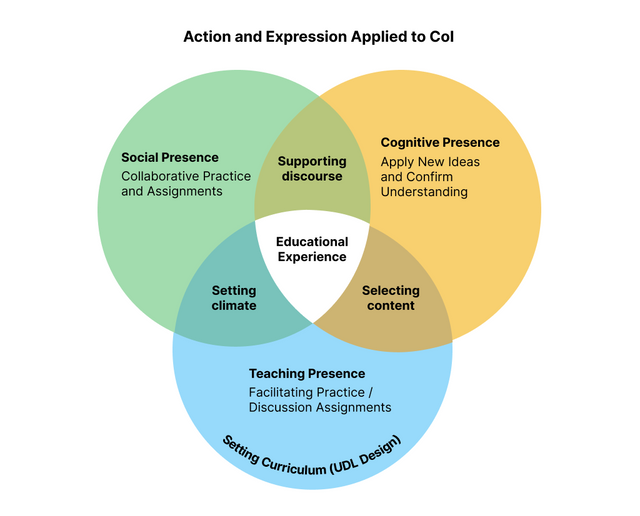Action & Expression and the Community of Inquiry Model
Similar to the three principles of UDL, the three presences of the Community of Inquiry (CoI) framework intersect and overlap. All three presences capture aspects of the Multiple Means of Action and Expression principle, particularly where social presence and cognitive presence overlap, “creating conditions to collaboratively achieve worthwhile educational goals” (Garrison, 2007; Anderson et al., 2001). In particular, where action and expression map to the Col model, learners can express their lived experiences authentically, enriching the learning experience for everyone in the learning community. In the Venn diagram below, you’ll see the Community of Practice model with teaching and learning activities in each presence that relate to action and expression.

If we revisit the CoI model through the lens of Multiple Means of Action and Expression and anti-oppressive educational frameworks, we can use the areas of the Venn diagram to design guiding questions for our reflective practice:
Social Presence
- Are there multiple opportunities for students to express themselves openly and collaboratively?
- Are guidelines or norms established by the community to guide collaboration? Are these regularly revisited and revised?
- Are there different modalities for students to use to express their ideas (verbal, text, video, etc.)?
Cognitive Presence
- Are students supported to check their understanding in different ways (self-check, peer-check, teacher-student conference)?
- Are students invited to apply their learning in meaningful contexts that connect to learning goals (their own and for the course)?
Teaching Presence
- Is intersectional variability a key design lens informing assessment decisions?
- Are students included in the curriculum design process?
- Are all students supported to practice the learning outcomes and given feedback that focuses on growth?